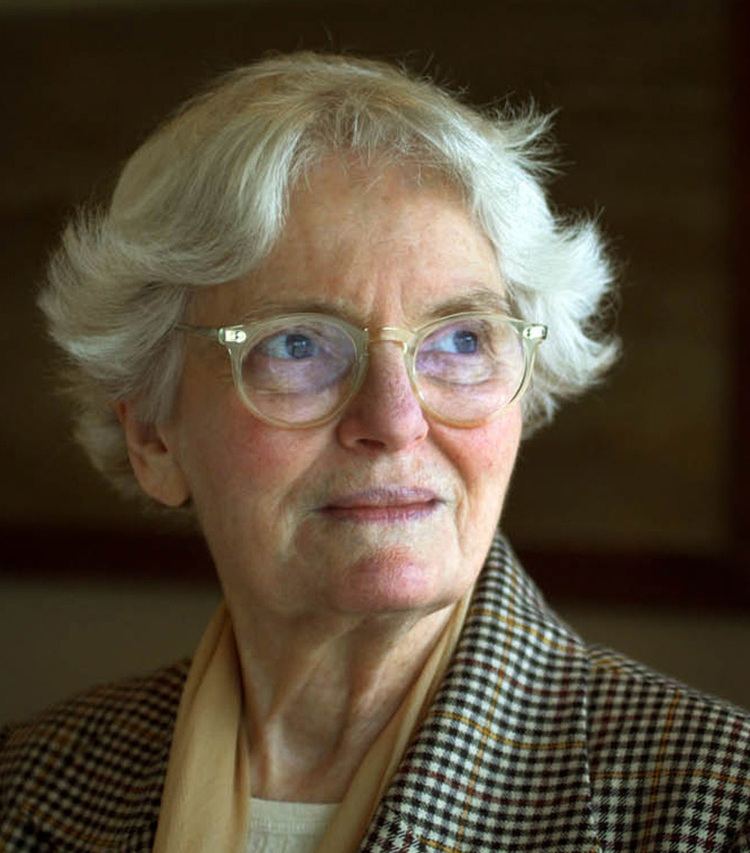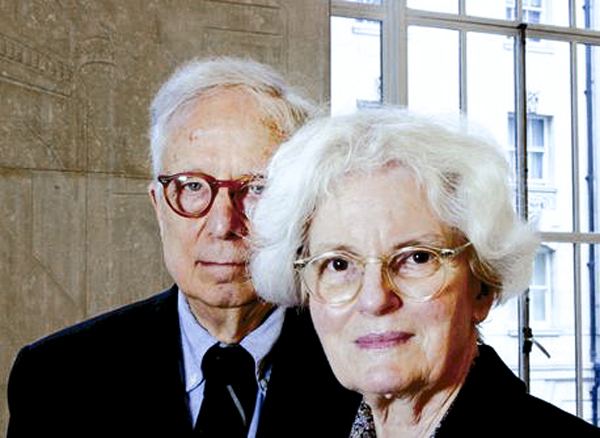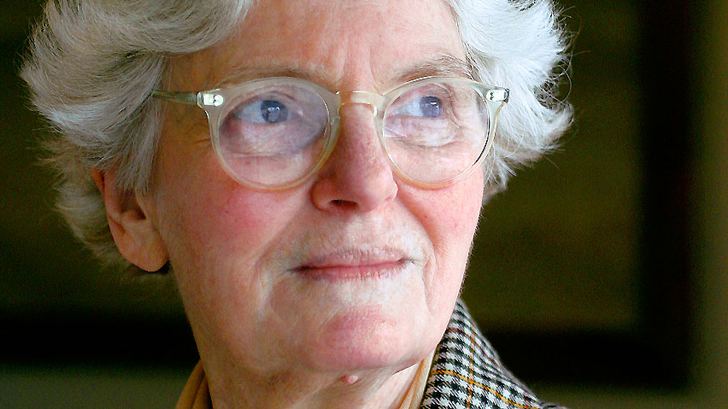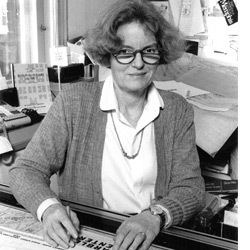Nationality American Books The Ordinary Role Architect | Name Denise Brown Occupation Architect | |
 | ||
Full Name Denise Scott Lakofski Alma mater University of the WitwatersrandArchitectural Association School of ArchitectureUniversity of Pennsylvania Practice Venturi, Scott Brown and AssociatesVenturi and RauchVenturi, Rauch and Scott Brown Parents Phyllis Lakofski, Simon Lakofski Structures Sainsbury Wing, Allen Memorial Art Muse, Seattle Art Museum Similar People Robert Venturi, Steven Izenour, Philip Johnson, Cass Gilbert, Brad Cloepfil | ||
Denise scott brown mayhew s architecture
Denise Scott Brown (née Lakofski; born October 3, 1931) is an American architect, planner, writer, educator, and principal of the firm Venturi, Scott Brown and Associates in Philadelphia. Scott Brown and her husband and partner, Robert Venturi, are regarded as among the most influential architects of the twentieth century, both through their architecture and planning, and theoretical writing and teaching.
Contents
- Denise scott brown mayhew s architecture
- Episode 25 robert venturi and denise scott brown part 01
- Education and teaching
- Architecture and planning
- Pritzker Prize controversy
- Room at the top
- Selected works
- Awards
- References

Episode 25 robert venturi and denise scott brown part 01
Education and teaching

Born to Jewish parents Simon and Phyllis (Hepker) Lakofski, Denise Lakofski had the vision from the time she was five years old that she would be an architect. Pursuing this goal, she spent her summers working with architects until she studied in South Africa at the University of the Witwatersrand from 1948 to 1952. She briefly entered liberal politics, but was frustrated by the lack of acceptance of women in the field and desired more contemporary theory. Lakofski traveled to London in 1952, working for the modernist architect Frederick Gibberd. She continued her education there as well, winning admission to the Architectural Association School of Architecture to learn “useful skills in the building of a just South Africa” and find an environment more intellectually rich and accepting of women. She was joined there by Scott Brown, whom she had met at Witwatersrand in 1954, and graduated with a degree in architecture in 1955.

Denise and Robert Scott Brown were married on July 21, 1955. The couple spent the next three years working and traveling throughout Europe. In 1958, the Scott Browns came to Philadelphia, Pennsylvania to study at the University of Pennsylvania's planning department. In 1959, Robert Scott Brown died in a car accident. Scott Brown completed her master's degrees in city planning in 1960 and became a faculty member at the university upon graduation. She completed a master's degree in architecture while teaching. At a 1960 faculty meeting, Scott Brown met Robert Venturi, a young architect and faculty member, when she spoke against demolishing the university's library (now the Fisher Fine Arts Library), designed by Philadelphia architect Frank Furness. The two became collaborators and taught courses together from 1962 to 1964. Scott Brown left the University of Pennsylvania in 1965. Becoming known as a scholar in urban planning, she taught at the University of California, Berkeley, and was then named co-chair of the Urban Design Program at the University of California, Los Angeles. During her years in the Southwest, Scott Brown became interested in the newer cities of Los Angeles and Las Vegas. She invited Venturi to visit her classes at UCLA, and in 1966 asked him to visit Las Vegas with her. The two were married in Santa Monica, California on July 23, 1967. Scott Brown moved back to Philadelphia in 1967 to join her husband's firm, Venturi and Rauch, and became principal in charge of planning in 1969. Scott Brown later taught at Yale University, and in 2003 was a visiting lecturer with Venturi at Harvard University's Graduate School of Design.
Architecture and planning

In 1972, with Venturi and Steven Izenour, Scott Brown wrote Learning From Las Vegas: the Forgotten Symbolism of Architectural Form. The book published studies of the Las Vegas Strip, undertaken with students in a research studio Scott Brown taught with Venturi in 1970 at Yale's School of Architecture and Planning. The book joined Venturi's previous Complexity and Contradiction in Architecture (Museum of Modern Art, 1966) as a rebuke to orthodox modernism and elite architectural tastes, and a pointed acceptance of American sprawl and vernacular architecture. The book coined the terms "Duck" and "Decorated Shed" as applied to opposing architectural styles. Scott Brown has remained a prolific writer on architecture and urban planning.

Scott Brown & Venturi strove for understanding the city in terms of social, economic and cultural perspectives, viewing it as a set of complex systems upon planning. Prior to design, the Venturi, Scott Brown & Associates firm studies the trends of the area, marking future expansions or congestions. These studies influence plans and design makeup. Such an approach was used for their Berlin Tomorrow Competition, putting the population movement and daily pattern in consideration. Similarly, the Bryn Mawr College plan took into consideration the landmark of the early campus and the usages of campus space prior to planning. Scott Brown holds a systematic approach to planning in what is coined as “FFF studios.” In it, form, forces and function determine and help define the urban environment. For example, the Venturi, Scott Brown & Associates firm studied both the expansion of Dartmouth College campus along with the wilderness surrounding the perimeter of the area.
The fusion of Eastern and Western ideas in the Nikko hotel chain are evident by merging the Western notion of comfort (62 Stanislaus Von Moos) with historical kimono patterns with their hidden order. The architecture applies a post-Las Vegas modern feel while projecting the traditional Japanese shopping street. Guest rooms are typically made with Western taste, with fabrics, wallpaper, and carpet exclusively from the Venturi, Scott Brown & Associates firm that reflect the scenery outside. In contrast, the exterior “street” complex reflects Japanese urban and traditional life.
With the firm, renamed Venturi, Rauch and Scott Brown in 1980; and finally Venturi, Scott Brown and Associates in 1989, Scott Brown has led major civic planning projects and studies, and more recently has directed many university campus planning projects. She has also served as principal-in-charge with Robert Venturi on the firm's larger architectural projects, including the Sainsbury Wing of London's National Gallery, the capitol building in Toulouse and the Nikko Hotel and Spa Resort in Japan.
Pritzker Prize controversy
When Robert Venturi was named as winner of the 1991 Pritzker Architecture Prize, Scott Brown did not attend the award ceremony in protest. The prize organization, the Hyatt Foundation stated that, in 1991, it honored only individual architects, a practice that changed in 2001 with the selection of Jacques Herzog and Pierre de Meuron. However, the award was given to two recipients in 1988.
In 2013, Women In Design, a student organization spearheaded by Caroline Amory James and Arielle Assouline-Lichten at the Harvard Graduate School of Design started a petition for Scott Brown to receive joint recognition with her partner Robert Venturi. When awarded the Jane Drew Prize in 2017 Scott Brown referred to the Pritzer controversy and subsequent petition saying "I was very touched by the Pritzker petition – and that is my prize in the end. 20,000 people wrote from all over the world and every one of them called me Denise."
Room at the top
In 1989, Scott Brown published the famous essay titled "Room at the top? Sexism and the Star System in Architecture". Although Scott Brown already wrote the essay in 1975, she decided not to publish it at the time, out of fear for damaging her career. In this essay she describes her struggle to be recognized as an equal partner of the firm, in an architecture world that was predominantly male. She has since been an advocate for Women in Architecture and has spoken out about discrimination within the profession on several accounts.
